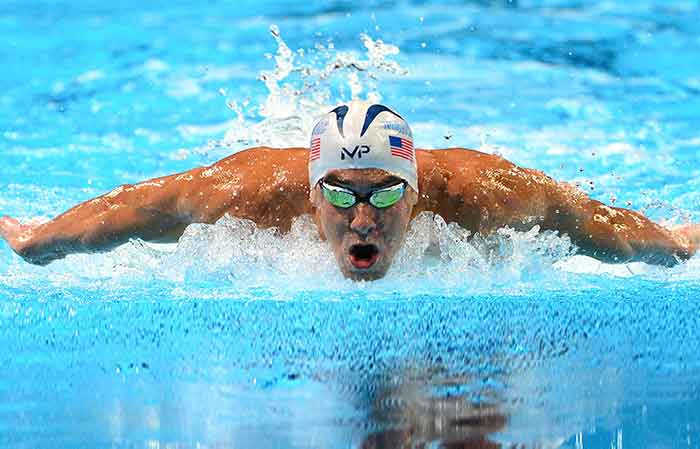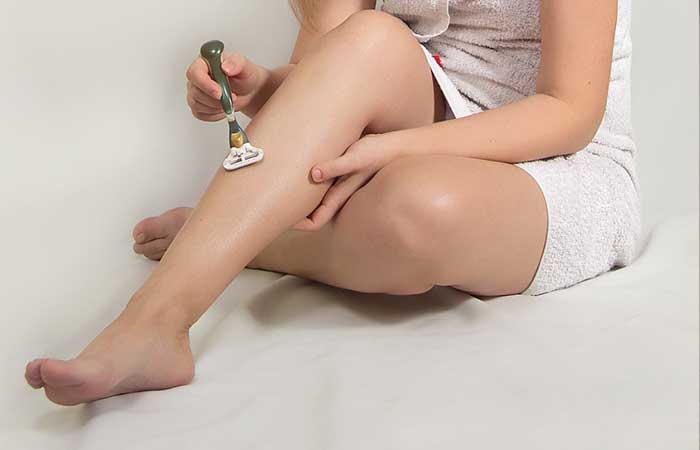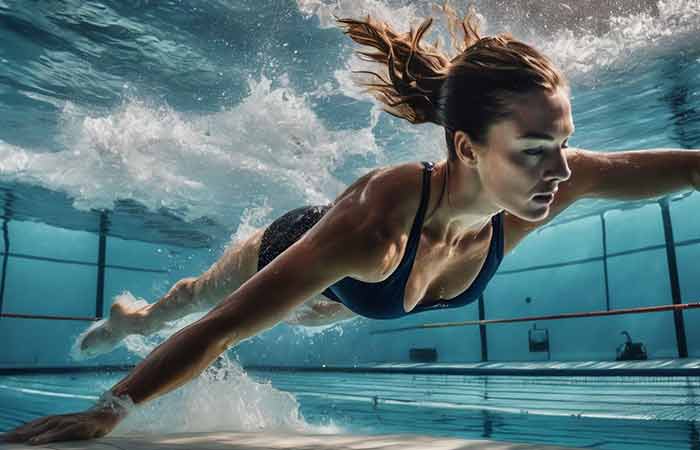How to Swim Butterfly: Technique, Drills & Tips
The butterfly swimming stroke is a style swum with symmetrical arm movements when facing down. It has the unique butterfly or dolphin kick which pushes the body ahead.
On the competitive front, the butterfly is the newest competitive style as it only launched in the year 1933. It is also the most tiring and complicated to learn. Following are details on how to do the fly, technique including, form, arm movement, kick, drills and tips to improve or learn fast.
Technique
The butterfly stroke is hinged on proper body form mainly the synchronous movements in the arms and the legs. You not only gain speed from the movements in the legs and arms, but the movement of the body as well.

The starting point for this style is a flat profile with the arms in front of your head and the body straight to the feet.
1. Arm Movements
The major arm movements for this style are the pull, the push and the recovery phase. The pull phase entails the arms going over your head, dipping into the water, and pulling the body forwards in the process.
The push phase entails pushing the palms backwards through the water and, in the process, propelling your body forwards. The arms are pushed about a third of the way to the hips for easier recovery.
In the recovery phase, you straighten the elbows then swing the hands forward. As your hands come forward, the upper body should be let to relax and get into the water until the move is restarted.
2. Leg Movements
The leg movements in the butterfly stroke determine the movements of the rest of the body to a large extent. That’s why you need strong legs to pull it off. For example, the shoulders move above the water from the up kick and below the surface from a down kick.
To avoid losing the water pressure, the feet are to be kept together throughout the move. In a single move, there are two kicks; one up and the other one down.
The amount of force you put on a kick depends largely on your energy reserves. As such, you are at an advantage when you have more energy in your feet. This is helped to an extent by the body size with bigger bodies offering more power.
3. Breathing Rhythm
Breathing with the butterfly stroke is very difficult yet very important. This is because there is a very small period in which you can breathe. You have to properly match the movements of the body such that you take a breath once your arms are deep in the water and your head comes out of the water.
Given the short period of time your head will be above the water, you need to breath through the mouth to catch enough air. If your head stays out of the water too long, or goes too much above the surface of the water, you hinder the recovery phase as the hips become deeper and create drag on your body.
There are many options for when to breath. For most swimmers, the rhythm is to breath in every second stroke. If you’re really fast, you can catch a breath every stroke. There’s also a rhythm for the swimmer to breath two strokes in a row then go without taking in air for two consecutive strokes.
For short distances, you’re actually better off not breathing to focus on the speed. The aim is to take as little time as possible breathing.
4. Body Movements
The most dominant aspect of the butterfly stroke is the fluid and wavy movements of the body. The central aspect is the core which ensures that the rest of the body is in line with the single line from the head to the feet.
As your chest dips into the water, the hips are pushed up and the feet down then up. The end of the move is a fluid back kick which gives you the propulsion needed.
As you get better with this stroke, you’ll experience very little movements up and down. Rather, your body will be moving within a narrow plane with only the arms breaching the parallel lines at the edge of the plane.
5. Starting Phase
At the start of the swim, you jump into the water then glide for a period before starting the strokes. To gain distance from the start, jump in a gliding manner such that your body enters the water at your fingertips then level your body out as soon as your head is below the water.
Before the first stroke, do small dolphin kicks to propel you ahead for a short distance then start the strokes. While you can do the gliding motion until you feel a reduction in the forward speed, the competition rules only allow for a glide of up to 15 meters before the stroking starts.
As you glide under the water, your hands should act as the lead as your body moves in waves ending in dolphin kicks. It’s recommended that you start your movement by spending a while under the water to reduce the drag created when you jump into the water.
6. Turning and Finishing
Turning and finishing the swimming routine contribute immensely towards your overall result as a small mistake can lead to the loss of significant amounts of time. In the turning and finishing of the swim, both of your hands must touch the wall. While this is a swimming regulation, it’s also an advantage as it helps you in turning by pushing against the wall and gaining momentum in the opposite direction.
In the turning phase, your body must remain facing down. As you reach the wall, you touch it with both hands while absorbing the momentum by bending the elbows slightly. You then turn sideways and push yourself away from the wall one hand at a time.
As you absorb the momentum on the wall, you bring your feet under you such that they come into contact with the wall and push yourself ahead as you start the return journey. You can glide a bit under the water like in the starting phase but then you have 15 meters before starting the stroke again.
As you finish the contest, you’re needed to touch the wall of the pool with both hands at the same time. Also, both hands need to be on the same horizontal plane for it to count as a finish.
7. Butterfly Styles
The butterfly stroke has four main styles as follows:
Arm pull up simultaneous with dolphin kick
After the head has gone into the water, the arms follow simultaneously but remain higher than the head. After you’ve done the first dolphin kick, you pull the arms with a downward motion. This is followed by the second dolphin kick and arms pulling upwards.
Arm pull down simultaneous with dolphin kick
After your head has gone under the water, both arms will go into the water until they’re lower than your head. With the first dolphin kick, the arms are raised in a relaxing motion. As the arms rise, float the body by bending the knees and the midsection.
As you make the dolphin kick, pull the arms downwards into the water then push the water backwards.
Arm pull up simultaneous with single dolphin kick
This style is similar to the arm pull up simultaneous with dolphin kick but with only a single dolphin kick.
Arm pull down simultaneous with signal dolphin kick
This style is similar to the arm pull down simultaneous with dolphin kick but with a single dolphin kick.
The last two styles require less energy as they only have a single dolphin kick. However, given that the dolphin kick is a major part of the propulsion for this style, they’re relatively slower.
Tips & Drills Improve your Butterfly
Butterfly Stroke Benefits
This stroke has many benefits such as the following:
1. Improves your cardiovascular system
Swimming improves your cardiovascular system in that it makes your heart and lungs stronger. The timed breathing and energy use develop these organs further. In essence, this reduces the risk of death from cardiovascular diseases.
2. Helps reduce asthma symptoms and attacks
If the swimming pool you use doesn’t use chlorine, swimming will help you manage your asthma with great results. As you swim, your lung capacity also increases thus making you better at managing the disease.
3. Burns calories
Swimming is among the most effective methods of burning calories you can find. While you won’t sweat like the guy in the gym, you’ll burn just as many calories. Even better, it’s fun swimming and even very slow swimming speeds burn significant amounts of calories.
4. Makes you happier
When you swim, the fluid movements of the body and being in contact with water has been proven to uplift your moods. It’s the reason why most countries close to water bodies such as Madagascar are among the happiest in the world.
5. Can be done even during pregnancies
Swimming has a very low risk on a pregnancy such that it can be performed whenever you feel like it. Even better is the fact that it makes you stronger and better prepared for the delivery.
6. It’s a complete exercise
Swimming is among the few exercises that work the whole of your body at once. It also works the body in many different ways from toning to building muscles and resilience at the same time.
Swimming also offers a way of healing from injuries and relieving pain from conditions such as arthritis. The body coordination involved in this stroke help improve the response times of the body.
Many other benefits exist beyond these ones and it all depends on how much of each benefit you want to derive from it.
For a person who just needs to stay fit without hitting the gym, swimming at least twice a week an hour each day is enough to burn enough calories to keep them healthy.
As you learn more about swimming and improve your speed and number of styles, you’ll derive more benefits from it.
Being one of the most difficult swimming styles to master, the butterfly stroke offers among the best benefits from a workout.
How Hard/Easy is Butterfly
It looks simplistic to an onlooker but is among the most difficult styles to master given the intricate body motions involved.
While other styles of swimming can allow you perform even when you’re not at your best, the butterfly requires the right combination of body movements and energy to work.
It’s why the likes of Michael Phelps have dominated their areas owing to their size and years of perfection.
How Fast is Butterfly?
While quite popular, the butterfly style isn’t the fastest swimming style. In fact, it comes second to the simplistic freestyle owing to the many aspects that go into it.
However, peak speeds for this style have seen some swimmers beat the freestyle speed. The problem is that it’s tough maintaining the speed over long distances especially during the recovery phase. Also, you’ll need to be quite strong and large to achieve certain high speeds with it.
History
The butterfly style is credited to Sydney Cavill from Australia. At the age of 16, Sydney became the Australian amateur swimming champion largely due to his use of this type of stroke.
He used its speed to beat the competition with a combination of body movements and propulsion techniques not seen before in the late 1890s. A few years after Sydney’s heroics, Henry Myers used the same style in the United States to win a competition in Brooklyn.
Another notable from this group is David Armbruster who, after analyzing the weaknesses of the breaststroke style such as drag during recovery, tweaked the butterfly style to overcome that.
Around the same time, the butterfly or dolphin kick was invented by Jack Sieg. Volney Wilson, after studying the movements of fish, would modify the kick to perfection.
The butterfly style made its debut in the summer Olympics of 1954 where both men and women were allowed to use it in competing. Before that, those who used techniques from this style in competitions meant for other styles would get disqualified for it.
Some of the most famous users of this style include Michael Phelps who has the most Olympic medals mostly from the use of this style.
Further Reading
Following is a list of articles with more swimming information and other water sports
Swimming Strokes/Styles
- Different Types of Swimming Strokes, Styles & Names
- What is Sculling in Swimming? How to do it
- How to Tread Water- Techniques, Benefits & Exercises
- How to Swim Freestyle: Technique, Tips & Drills
- How to Swim Breaststroke: Kick, Pull, Form, Drills & Tips
- How to Swim Elementary Backstroke- Technique, Drills & Tips
- How to Swim Sidestroke-Technique,Trudgen &Combat Drills & Tips
- How to Swim Backstroke-Technique, Drills & Tips
- How to Swim Butterfly: Technique, Drills & Tips
Swimming FAQs & Ideas
- How Many Calories Does Treading Water Burn?
- Can you Swim with Contacts in the Ocean/Pool?
- Can you Open your Eyes in the Salty Ocean or Chlorinated Pool Waters?







